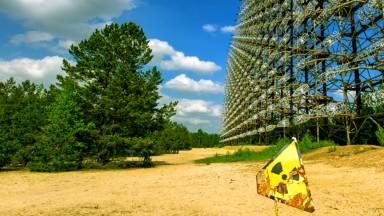
NASA announced today that it will send a "drone" to Titan, the largest of Saturn's moons. The Dragonfly project is, in fact, the finalist of the New Frontiers program, with which the American space agency funds planetary exploration missions up to a maximum cost of $850 million in development costs, and which has already launched missions of the scale of New Horizons, Juno and OSIRIS-REx.
Titan is one of the most promising environments for those looking for traces of life outside our planet. Perhaps, for this reason, Dragonfly beat the other finalist project, Comet Astrobiology Exploration SAmple Return (CAESAR), which aimed to collect and bring to the Earth 80 grams of material from the core of the comet 67P/Churyumov-Gerasimenko (the same visited by the Rosetta probe).
Dragonfly really will look like a UFO drone. Powered by an innovative radio-isotope source of energy, it will also move over long distances to analyze the surface and atmosphere of Titan.
This is one of the two missions selected by NASA for the exploration of the Solar System from the mid-twenties, under the New Frontiers program.
NASA dragonfly is a real turning point in the exploration of the Solar System. So far, on the Moon and on other planets and their moons, probes have landed to explore relatively close areas to the landing point. Opportunity, for example, the one that has walked the most distance in comparison to other planetary rovers, has reached 45 kilometers away from the landing point.
With a flying rover able to exploit the atmosphere of Titan to sustain and move, it will be possible to study areas that are very different and far apart.
The moon of Saturn is covered by a surface of frozen methane, but there are also lakes of hydrocarbons (methane and ethane liquids), deep even more than 100 meters, and rivers of hydrocarbons that have valleys and canyons inside. A super cold environment that could still hide the fundamental elements of life.
Being able to observe closely and study places hundreds of kilometers away from each other will give scientists information that could not be obtained from a probe in orbit, plus because the dense atmosphere does not allow in-depth studies of the surface.
in 2005, the Huygens probe has already fallen on Titan, but it was in fact firm enough to survive for few hours, sending to Earth a set of important but limited images and information. From the data of that mission emerged the extreme variety of the environment of Titan, which encouraged NASA to choose and organize the next mission in the Saturn system.
For more information about Titan, visit:
https://solarsystem.nasa.gov/moons/saturn-moons/titan/overview









